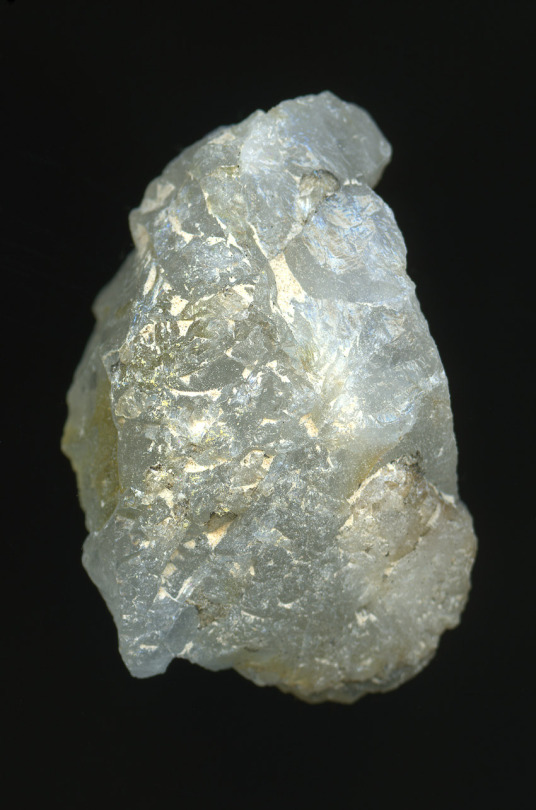BY DIETER DEBRUYNE
Clik here to view.

© Pauline Mikó, Buried Photographs from ‘A Project for Later’
Tell us about your approach to photography. How would you describe your personal research in general?
Pauline Mikó (PM): My approach of photography is rather personal. I use the photographic medium as a way to document time. Through experimentation with film negatives and burying printed images in metal boxes, I analyze the effects of time and natural elements on photographs. I also collect elements that I either photograph or scan in order to enlarge them and give them another scale, another importance: I use photography to magnify found, precious, specific objects. To me, all my images are dots forming some sort of time line: Connected, they draw a fragmented and personal story.
Clik here to view.

© Pauline Mikó, ‘In Statu Nascendi’
What do you think about photography in the era of digital and social networking?
PM: Nowadays, we are flooded with images. It’s interesting to see that at the end of the day, all the photographs we see fade away in a massive sea of images.
It’s getting harder to make a difference between what’s art and what isn’t, as the boundaries between Instagram shots, framed photographs exhibited in galleries, self-portraits and selfies, etc. are slowly disappearing.
Tell us about your latest project ‘A Project for Later’.
PM: In 2003, at the age of twelve, I buried a metal box in the garden of a friend. The box contained two photographs and a letter I wrote to my future self.
Ten years later, the box was dug out of the ground and its content was revealed. In 2013, I decided to start burying new boxes. So far there are five boxes buried in different places of the world.
Clik here to view.

© Pauline Mikó, ‘A Project for Later’
Each box contains printed photographs, texts and small objects. They all tell a personal, yet fragmented and partly fictional story. I keep track of every buried box in a journal, using pieces of evidence, notes and pictures, names of locations, geographic coordinates and descriptions, in order to be able to find the boxes back in the future, eventually. There is a great chance I might never find these boxes back: they could get lost, be found by others, stolen, destroyed, or I myself could forget about them. These boxes are like memories, only time will tell if they will last. I call this project ‘A Project for Later’ and consider it a constant dialogue between my past, present and future self.
Clik here to view.

© Pauline Mikó, ‘A Project for Later’
Your book has certain feel to it, meaning some pages have a structure; was this intended to?
PM: When you say ‘feel’, are you referring to the choice of paper? The graphic designer (Caroline Wolewinski) and I wanted to have a beautiful and textured paper for this book. I don’t know if you noticed but there’s actually two different papers in the book. It’s actually the same paper type (Multi Design) but they have different weights. The one used for the parallel series of black and white matter images is slightly heavier, thicker.
Clik here to view.

Book - A Project for Later, Text and Photographs by Pauline Mikó, Design by Caroline Wolewinski
With this choice we wanted to break the reading pace of the viewer. Multi Design is a very textured, dense paper. Our desire was to obtain an intensely dark, deep black on the side of all the images of the facsimile with some texture, encouraging to be grabbed, touched, felt. Another interesting aspect of Multi Design is that it allows transparency, which was important for the lighter parts of the images.
Clik here to view.

© Pauline Mikó, The Rock from ‘A Project for Later’
Is there any contemporary artist or photographer, even if young and emerging, who influenced you in some way?
PM: My former mentor Dirk Braeckman. Japanese photographer Daisuke Yokota. Matthew Brandt and Stephen Gill.
Three books of photography that you recommend?
PM: - Found Photos in Detroit by Arianna Arcara and Luca Santese (Centura Publish, 2012)
- Site/cloud by Daisuke Yokota (G/P gallery, 2013)
- Five Dark Dream Slow by Melissa Catanese (The Ice Plant, 2012)
Is there any show you’ve seen recently that you find inspiring?
PM: The last show I saw was at Tate Modern in London early October. I was mesmerized by Gerhard Richter’s large-scale paintings exhibited in the permanent collection.
Clik here to view.

© Gerhard Richter, courtesy Cantz Verlag. Photo: Benjamin Katz. Gerhard Richter in his studio, photographed by Benjamin Katz (1987)
Projects that you are working on now and plans for the future?
PM: I recently self-published a book entitled “A project for later” which kept me busy over the last month. I’m currently preparing a group show around the theme of memory together with a new collective I’m part of (Unfold Kollektive with painter Falcone, videographers R’m Aharoni and Eva Giolo and photographer Jeroen Vranken). The show opens on November 19th 2015 at Braam Art Gallery in Brussels and will run until December 3rd 2015. Other than that, I’m still experimenting with film negatives and preparing new boxes to bury.